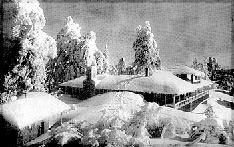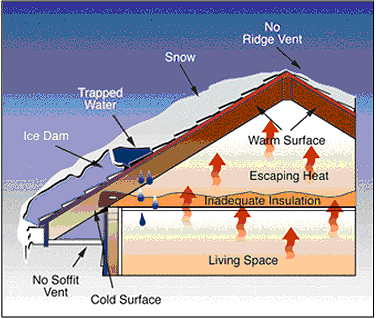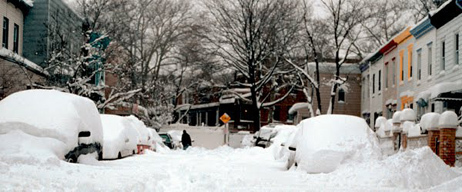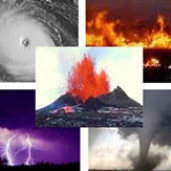
Severe winter weather causes deterioration and damage to homes every year. There are many things you can do to prepare for the bitter cold, ice and snow in advance to save you money and headaches in the long run. Some of these tips should be used by apartment dwellers too.
“Winterize” your home
- Insulate walls and attic.
- Caulk and weather-strip doors and windows.
- Install storm windows or cover windows with plastic film from the inside to keep warmth in.
- Detach garden hoses and shut-off water supply to faucet.
- Install faucet covers or wrap with towels and duct tape.
- Show family members the location of your main water valve and mark it so you can find it quickly.
- Drain sprinkler lines or well lines before the first freeze.
- Keep inside temperature of your home at 68 degrees Fahrenheit (20 degrees Celsius) or higher.
- Wrap pipes near exterior walls with towels or heating tape.
- Change furnace filters regularly and have it serviced.
- Make sure you have good lighting from street and driveways to help others see snow and ice patches and try to keep paths clear of drifts.
- Remove dead tree branches since they break easily.
- Cover fireplace openings with fire-resistant screens.
- Check shingles to make sure they are in good shape.
Preventing “ice dams”
A lot of water leakage and damage around outside walls and ceilings are actually due to “ice dams”. Ice dams are lumps of ice that form on gutters or downspouts and prevent melting snow from running down. An attic with no insulation (like a detached garage) or a well-sealed and insulated attic will generally not have ice dams. But if the roof has peaks and valleys, is poorly insulated, or has a large roof overhang, ice dams usually happen.

Some tips to prevent ice dams:
- Keep gutters and downspouts clear of leaves and debris.
- Find areas of heat loss in attic and insulate it properly.
- Wrap or insulate heating duct work to reduce heat loss.
- Remove snow buildup on roof and gutters using snow rake or soft broom.
- Consider installing roof heat tapes (electric cables) that clip onto shingles’ edges to melt channels in ice. (Remember, cables use a lot of energy and may not look pretty but could help on homes with complicated roofs.)
Preventing frozen pipes
- Keep doors open under sinks so heat can circulate.
- Run a slow trickle of lukewarm water and check water flow before going to bed and when you get up. (First sign of freezing is reduced water flow so keep an eye on it.)
- Heat your basement or at least insulate it well.
- Close windows and keep drafts away from pipes since air flow can cause pipes to freeze more often.
The best way to protect yourself from a winter disaster is to plan ahead before the cold weather begins.
BEFORE A WINTER STORM:
Learn the buzzwords – Learn terms / words used with winter conditions…
- Freezing rain – rain that freezes when it hits the ground, creating a coating of ice on roads and walkways
- Hail – rain that turns to ice while suspended and tossed in the air from violent updrafts in a thunderstorm
- Sleet – rain that turns to ice pellets before reaching ground
- Winter Weather Advisory – cold, ice and snow expected
- Winter Storm Watch – severe winter weather such as heavy snow or ice is possible within a day or two
- Winter Storm Warning – severe winter conditions have begun or are about to begin
- Blizzard Warning – heavy snow and strong winds producing blinding snow (near zero visibility) and lifethreatening wind chills for 3 hours or longer
- Frost/Freeze Warning – below freezing temperatures expected

Be prepared – Develop a Family Emergency Plan and Disaster Supplies Kit, and add the following at home for winter storms:
- calcium chloride – good for melting ice on walkways (rock salt can blister concrete and kill plants)
- sand or kitty litter – to improve traction
-
emergency heating equipment and fuel – have backup…
- fireplace – gas or wood burning stove or fireplace
- generator – gas or diesel models available and learn how to use it in advance (and never bring it indoors!)
- kerosene heaters – ask Fire Department if they are legal in your community and ask about safety tips in storing fuel
- charcoal – NEVER use charcoal indoors since fumes are deadly in contained room — fine for outdoor use!!
- extra wood – keep a good supply in a dry area
- extra blankets – either regular blankets or emergency blankets (about the size of a wallet)
Clean chimney – If you use a wood-burning fireplace often, have it inspected annually and consider having a professional chimney sweep clean it as needed. Learn more in the Chimney Safety Institute of America’s FAQs at www.csia.org
Above from IT'S A DISASTER! ...and what are YOU gonna do about it? book (and PDF ebook)




